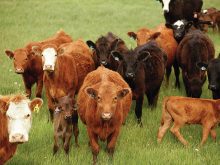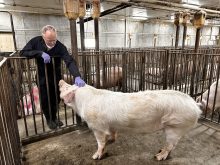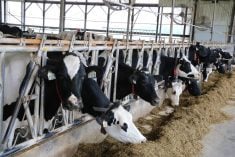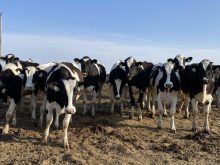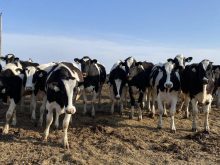Parasites that live in animals’ digestive tracts are the most frequent and arguably the most important parasites to infect animals.
However, parasites can occupy a variety of organs in the body, including the skin, brain and kidney.
A lesser-known class of parasites are those that reside in the lungs and windpipe. These lungworms affect a diverse range of animal species. For instance, lungworms are common in marine mammals like dolphins and whales. On dry land, they affect deer, elk and muskox to name a few.
Read Also

Beef check-off collection system aligns across the country
A single and aligned check-off collection system based on where producers live makes the system equal said Chad Ross, Saskatchewan Cattle Association chair.
Among domestic species, cattle, sheep, goats, llamas, alpacas, horses, donkeys and pigs all have their own unique lungworms.
Dogs and their wild relatives, wolves, foxes and coyotes, can be infected with several species of lungworms. Even cats have their own type of lungworm.
The impact of lungworms on an individual animal depends on its immune system and the number of worms it ingested. The most severe infections tend to occur in young animals. Adults that have survived previous infections can develop resistance.
In all infections, the worms can block the lower airways within the lungs, leading to patchy areas of edema fluid and emphysema. Heavy lungworm infections can also cause pneumonia and bronchitis.
Animals with severe infections may develop a chronic cough, lose weight, have difficulty breathing and become lethargic. Lungworms may even kill the animal.
In many cases, there are no outward signs of illness. In terms of production animals and economic impacts, lungworms are associated with reduced milk production, slower growth rates and weight loss.
Lungworm life cycles are complex compared to the life cycles of intestinal worms. Animals are exposed to infective immature larval worms when grazing on pastures. These develop into adults in the lung and produce eggs.
Depending on the species, the eggs hatch in the lungs or in the feces to release larvae.
Either eggs or larvae are coughed up and then swallowed. The larvae pass through the digestive tract without attaching or causing harm.
Once deposited on the ground in feces, the larvae go on to develop into the stage where they can infect other animals.
Some species require the passage through an intermediate species before they can become infective for the main host.
For instance, several lungworms of sheep need to pass through a snail or slug to complete the life cycle. Sheep become infected when inadvertently ingesting an infected snail or slug.
Lungworm can be difficult to diagnose. Clinical signs are not specific to only lungworms. Other conditions that affect the respiratory system, like viral or bacterial pneumonia, need to be ruled out.
A conclusive diagnosis is achieved if the larvae are present in the feces or if the worms are discovered during an autopsy of a de-ceased animal. In fact, autopsies of animals that die for a variety of causes are an effective way to identify subclinical lungworm infections. This information could be useful to help manage parasites in the rest of the herd or flock.
For most species, the “mectin” type dewormers like ivermectin are effective at killing these types of parasites. These dewormers are routinely used for deworming other parasites, so lungworm control may be built into routine herd health programs.
Vaccines are used to control lungworms in Europe.
Another important factor for control is pasture management and our northern climate. The larvae are generally killed during winter, which reduces the burden of this condition in herds.
However, with climate change, milder winters and potential resistance to deworming medication, lungworms could become more of an issue in Canada.
Dr. Jamie Rothenburger is a veterinarian who practices pathology and a PhD student at the Ontario Veterinary College. Twitter: @JRothenburger





